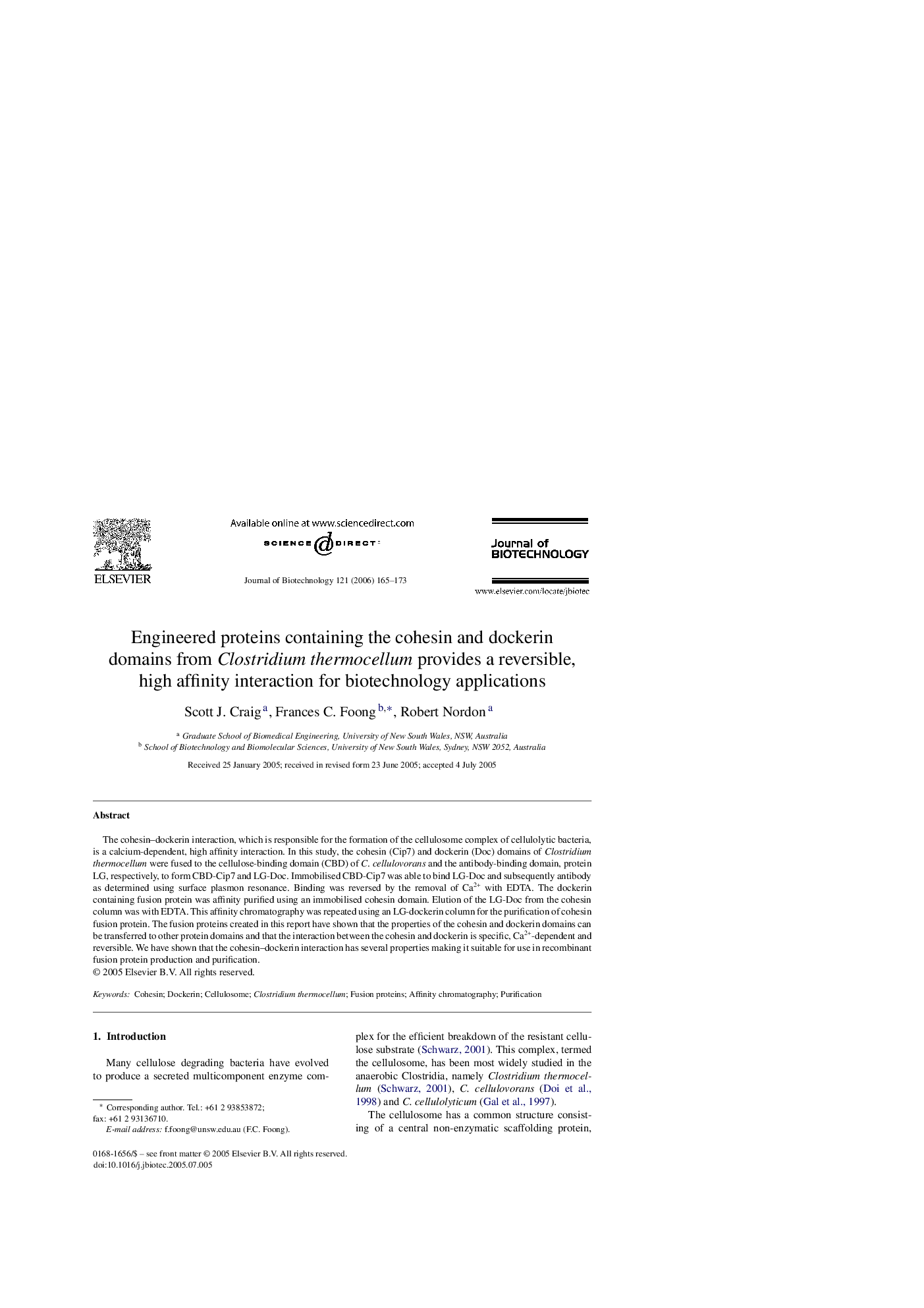| Article ID | Journal | Published Year | Pages | File Type |
|---|---|---|---|---|
| 25729 | Journal of Biotechnology | 2006 | 9 Pages |
The cohesin–dockerin interaction, which is responsible for the formation of the cellulosome complex of cellulolytic bacteria, is a calcium-dependent, high affinity interaction. In this study, the cohesin (Cip7) and dockerin (Doc) domains of Clostridium thermocellum were fused to the cellulose-binding domain (CBD) of C. cellulovorans and the antibody-binding domain, protein LG, respectively, to form CBD-Cip7 and LG-Doc. Immobilised CBD-Cip7 was able to bind LG-Doc and subsequently antibody as determined using surface plasmon resonance. Binding was reversed by the removal of Ca2+ with EDTA. The dockerin containing fusion protein was affinity purified using an immobilised cohesin domain. Elution of the LG-Doc from the cohesin column was with EDTA. This affinity chromatography was repeated using an LG-dockerin column for the purification of cohesin fusion protein. The fusion proteins created in this report have shown that the properties of the cohesin and dockerin domains can be transferred to other protein domains and that the interaction between the cohesin and dockerin is specific, Ca2+-dependent and reversible. We have shown that the cohesin–dockerin interaction has several properties making it suitable for use in recombinant fusion protein production and purification.
